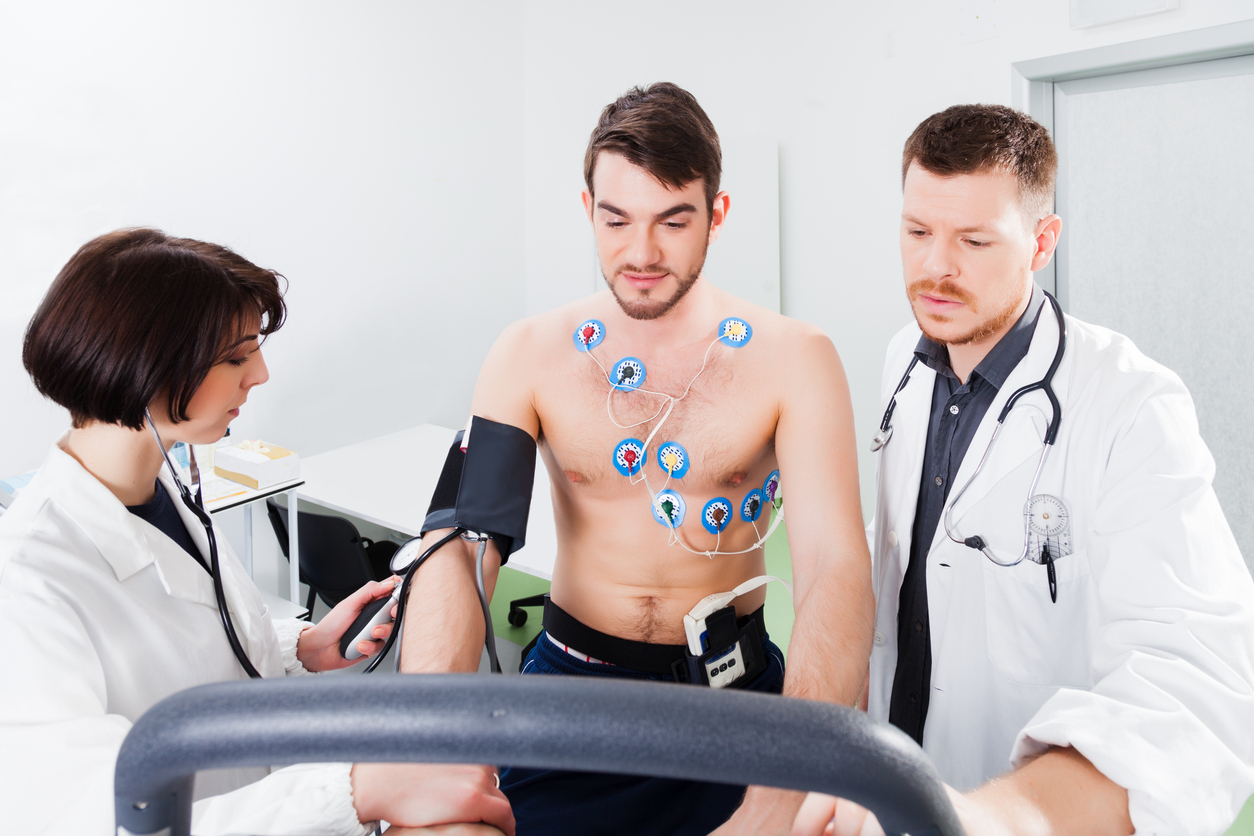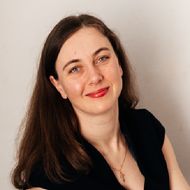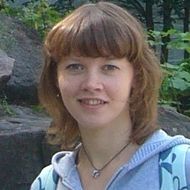'The Branch of Medicine That Our Developments Primarily Target Is Cardiology'

The application of mathematical models to the diagnosis and treatment of cardiovascular diseases contributes to the effective detection of patient predispositions and supports the selection of best treatment strategies. The use of mathematical models helps create new diagnostic tools and train neural networks to assist clinicians. Researchers from HSE University and colleagues from Saratov State Medical University are engaged in this work as part of the Mirror Laboratories project. In this interview, Natalya Stankevich, Senior Research Fellow at the International Laboratory of Dynamical Systems and Applications of the HSE Campus in Nizhny Novgorod, talks about what the collaboration has achieved so far.
Natalya Stankevich is the leader of the project 'Mathematical and Radiophysical Modelling of the Complex Dynamics of Living Systems for the Development of Methods for Analysing Experimental Data' carried out by the laboratory in collaboration with Saratov State Medical University (SSMU).
— How did the idea come about to create a Mirror Laboratory for interdisciplinary research and the application of mathematical models in medicine?
— The initiative came from HSE University, which has been hosting Mirror Laboratories project contests since 2020. At our laboratory, we were seeking to engage in applied work and welcomed the opportunity to collaborate with medical professionals and radiophysicists, combining our research to achieve new results through the integration of basic science with clinical and experimental studies.
— Which mathematical models have proven most applicable in medicine?
— There are numerous models based on different principles. Some represent abstract mathematical equations whose solutions produce signals which resemble, for instance, a typical ECG waveform. Some models are based on the physiological processes of the cardiovascular system. Others are hybrid models, where an abstract, mathematically simple model is enhanced with elements that reflect the physical system. Each of these models has its own area of application; some provide strictly mathematical results that can later be adapted to more physiologically accurate models.
Our partners have extensive experience in this field. The mathematical model they have been developing for many years describes the dynamics of autonomous cardiovascular regulation and captures the fundamental heart rhythm. The model comprises four main parts: two representing the autonomic nervous system, one regulating mean arterial pressure, and one accounting for the influence of respiration on these processes. The model features a large number of parameters (over 40), some of which our colleagues have derived from experimental data. It accurately replicates the dynamics of the human cardiovascular system.
Through our collaboration, we aim to identify which parameters are most important and could lead to changes in the cardiovascular system that are critical to patient health.
Building on previous work, our colleagues are now developing new, more realistic models of the human cardiovascular system. They are compiling an experimental database on the system’s specific nuances and creating sets of equations to capture effects that reflect individual health characteristics.

— In what areas of medicine and for which diseases are these developed models applied?
— The primary branch of medicine that our developments target is, of course, cardiology. This includes a wide range of cardiovascular diseases, such as chronic heart failure, hypertension, coronary heart disease, and others. There are also research areas and objectives focused on more narrow but related fields, such as psychology, sleep medicine, and sports medicine.
The models developed by our colleagues at SSMU make it possible to simulate various states of the cardiovascular system in healthy individuals, such as wakefulness, sleep, and physical activity. They also identified a set of parameters corresponding to arrhythmia, hypertensive crises, and vegetative blockade. Our partners have established a standard set of parameters through their analysis of experimental data, including ECG, blood pressure, and photoplethysmograms. (Photoplethysmography, or PPG, is a method for studying peripheral hemodynamics by measuring blood volume changes in the capillaries using red and infrared light directed at the skin—Ed.)
— How is this work organised?
— Our colleagues at the Cardiology Research Institute work at both the University Clinical Hospital of Saratov State Medical University and the Regional Clinical Cardiology Dispensary. They have access to a large volume of experimental data and conduct surveys of patients and medical professionals. Some of our colleagues are practicing cardiologists themselves. There is also a large archive of data accumulated over the years, which can be reprocessed and analysed in light of new hypotheses. One of our partners' most important developments is a method for calculating the phase synchronisation coefficient between components of the cardiovascular and respiratory systems. Using ECG and PPG analysis, they identify segments in the time series where synchronisation occurs. In 2024, our colleagues from SSMU analysed approximately 900 ECG recordings from patients with various cardiovascular diseases and calculated this coefficient, which effectively distinguishes healthy individuals from those with pathology.
Our team at HSE University is currently studying the conditions under which phase synchronisation occurs, ie we are developing the theoretical foundations explaining the emergence of phase synchronisation intervals. In the future, this theoretical model could help us understand what factors increase or decrease the duration of synchronisation intervals. It may also enable the development of modified models that generate data characteristic of patients with pathology, create realistic simulations, and produce surrogate data for machine learning—ultimately leading to devices that will assist doctors in routine tasks.
In addition to working with cardiovascular patients, our colleagues analyse data and develop models for healthy individuals under various conditions. Currently, experimental data is being collected by recording an electrocardiogram (ECG) at rest, followed by physical activity; then, after a brief rest (during which the heart rate typically recovers within a minute) a final ECG recording is taken. We subsequently process the data using the developed models to analyse how quickly the subject recovers, and we calculate indicators that characterise the complexity and randomness of the signal. Our partners from SSMU have shown that a healthy cardiovascular system exhibits a heart rate with natural randomness, while reduced randomness indicates disruption in rhythm regulation and may signal the presence of disease. Perhaps in the future, our clinical colleagues will be able to draw new insights from this data.

— How is your interaction going?
— Our key partner is Saratov State Medical University, and some project participants are physicists and radiophysicists who have built close contacts with medical professionals through many years of collaboration. While dedicating significant time to applied topics, we also aim to establish a solid theoretical foundation, advance dynamical systems theory, and apply its concepts to inspire new clinical experiments.
We are now in the third year of the project, and our medical partners have started proposing new objectives and designing experiments that we could validate through model-based calculations.
— How important is fundamental mathematics for creating models applicable to medicine?
— We are developing methods to verify the reliability and accuracy of our calculations. As part of one of the project’s objectives, we calculate the largest Lyapunov exponent, which indicates the presence of chaotic behaviour in the system. A positive value signifies that the system is functioning chaotically.
In the context of this objective, the main problem is to determine the nature of the non-periodicity in ECG signals. An open question remains: are we observing a periodic regime disrupted by noise, or is the cardiovascular system inherently governed by complex dynamics, with chaos as a fundamental property?
When calculating the Lyapunov exponent, a persistent challenge has been to distinguish between the contributions of noise and the intrinsic chaotic behaviour of the dynamical system. We applied statistical methods to propose a way to assess the contribution of noise and its role in the dynamical system. We were able to demonstrate that overall, the system’s dynamics are chaotic, which is an inherent property of the dynamical system itself. Noise affects the system, and depending on its characteristics, it can disrupt the structure of the chaotic attractor. That is why we need models that account for all these factors and enable us to assess their impact on the dynamic indicator.
Another objective that we are pursuing with our partners is studying the dynamics of cardiomyocytes, or heart muscle cells. Among them are typical cells that only contract, and atypical ones that transmit impulse signals and behave like neurons, functioning based on the Hodgkin–Huxley principle. We are investigating the idea that multistability in cardiomyocytes may predispose individuals to various arrhythmias. At this stage, we are using a relatively simple model to study scenarios involving the development and disruption of multistability. This study is important not only for medical applications but also for advancing bioimplants and tissue engineering—where damaged areas of heart tissue that fail to send proper signals, leading to arrhythmia, can be recreated or replaced.
— What fundamental mathematical problems are you aiming to solve?
— It would be ideal if we could rigorously prove the existence of a chaotic attractor in a model of the human cardiovascular system. However, this is quite challenging for a realistic model. We are working to illustrate some classic bifurcation scenarios that lead to the development of chaos. Demonstrating the development and evolution of chaos in stages, based on a physiologically sound model, would provide strong evidence that a certain model exhibits genuine chaotic behaviour—an important factor in addressing a number of medical problems as well.

Olga Posnenkova, Head of the Atherosclerosis and Chronic Coronary Heart Disease Department of the Research Institute of Cardiology at SSMU
— In recent years, we have made significant progress toward creating and using comprehensive digital twins of individual physiological systems that accurately mimic the processes in both healthy individuals and patients with various diseases. Digital twins are models that enable the prediction of a system’s response to specific impacts under controlled conditions—such as changes in operating parameters or the effect of drugs with different mechanisms of action.
Our collaboration with HSE University through the Mirror Laboratories project enables us to apply mathematical methods to study dynamic processes in the human cardiovascular system, compare results with existing data, and further improve the digital model of circulatory regulation. Mathematics experts broaden our understanding of how to analyse traditionally recorded biological signals, help us identify what information can be extracted from the chaotic components of cardiovascular signals, and determine how to manage health based on these insights. We hope that together we can advance into the field of translational medicine, where the results of basic research find application in real clinical practice.
The Mirror Laboratories format has proven to be an effective mechanism for collaboration. The regular exchange of expertise throughout several years of the project has enabled us to build an interdisciplinary team of like-minded individuals. We have not only expanded our knowledge in mathematical modelling but also learned to understand each other, find common ground, and lay the foundation for long-term collaboration focused on advancing our joint developments.
See also:
HSE Tops Ranking of Universities Participating in Priority 2030 Programme
The Russian Ministry of Science and Higher Education has published an updated list of participants in the Priority 2030 programme. A total of 106 universities will receive support this year. HSE University was included in the first group and topped the ranking.
'We View Mathematics as a Universal Language for Natural Sciences, Economics, and Computer Science'
The Laboratory for Geometric Algebra and Applications at the HSE Faculty of Economic Sciences is developing a universal language for mathematics, physics, and other exact and natural sciences. It is creating computational methods that are applied in geometry, physics, machine learning, engineering, computer science, and other fields. The laboratory’s staff, including doctoral students, have published numerous articles in leading scientific journals and have taken part in major international conferences. Dmitry Shirokov, Head of the Laboratory, spoke with the HSE News Service about their work.
HSE Psycholinguists Launch Digital Tool to Spot Dyslexia in Children
Specialists from HSE University's Centre for Language and Brain have introduced LexiMetr, a new digital tool for diagnosing dyslexia in primary school students. This is the first standardised application in Russia that enables fast and reliable assessment of children’s reading skills to identify dyslexia or the risk of developing it. The application is available on the RuStore platform and runs on Android tablets.
HSE Scientists Optimise Training of Generative Flow Networks
Researchers at the HSE Faculty of Computer Science have optimised the training method for generative flow neural networks to handle unstructured tasks, which could make the search for new drugs more efficient. The results of their work were presented at ICLR 2025, one of the world’s leading conferences on machine learning. The paper is available at Arxiv.org.
Physicists Propose New Mechanism to Enhance Superconductivity with 'Quantum Glue'
A team of researchers, including scientists from HSE MIEM, has demonstrated that defects in a material can enhance, rather than hinder, superconductivity. This occurs through interaction between defective and cleaner regions, which creates a 'quantum glue'—a uniform component that binds distinct superconducting regions into a single network. Calculations confirm that this mechanism could aid in developing superconductors that operate at higher temperatures. The study has been published in Communications Physics.
Neural Network Trained to Predict Crises in Russian Stock Market
Economists from HSE University have developed a neural network model that can predict the onset of a short-term stock market crisis with over 83% accuracy, one day in advance. The model performs well even on complex, imbalanced data and incorporates not only economic indicators but also investor sentiment. The paper by Tamara Teplova, Maksim Fayzulin, and Aleksei Kurkin from the Centre for Financial Research and Data Analytics at the HSE Faculty of Economic Sciences has been published in Socio-Economic Planning Sciences.
Larger Groups of Students Use AI More Effectively in Learning
Researchers at the Institute of Education and the Faculty of Economic Sciences at HSE University have studied what factors determine the success of student group projects when they are completed with the help of artificial intelligence (AI). Their findings suggest that, in addition to the knowledge level of the team members, the size of the group also plays a significant role—the larger it is, the more efficient the process becomes. The study was published in Innovations in Education and Teaching International.
New Models for Studying Diseases: From Petri Dishes to Organs-on-a-Chip
Biologists from HSE University, in collaboration with researchers from the Kulakov National Medical Research Centre for Obstetrics, Gynecology, and Perinatology, have used advanced microfluidic technologies to study preeclampsia—one of the most dangerous pregnancy complications, posing serious risks to the life and health of both mother and child. In a paper published in BioChip Journal, the researchers review modern cellular models—including advanced placenta-on-a-chip technologies—that offer deeper insights into the mechanisms of the disorder and support the development of effective treatments.
Advancing Personalised Therapy for More Effective Cancer Treatment
Researchers from the International Laboratory of Microphysiological Systems at HSE University's Faculty of Biology and Biotechnology are developing methods to reduce tumour cell resistance to drugs and to create more effective, personalised cancer treatments. In this interview with the HSE News Service, Diana Maltseva, Head of the Laboratory, talks about their work.
Solvent Instead of Toxic Reagents: Chemists Develop Environmentally Friendly Method for Synthesising Aniline Derivatives
An international team of researchers, including chemists from HSE University and the A.N. Nesmeyanov Institute of Organoelement Compounds of the Russian Academy of Sciences (INEOS RAS), has developed a new method for synthesising aniline derivatives—compounds widely used in the production of medicines, dyes, and electronic materials. Instead of relying on toxic and expensive reagents, they proposed using tetrahydrofuran, which can be derived from renewable raw materials. The reaction was carried out in the presence of readily available cobalt salts and syngas. This approach reduces hazardous waste and simplifies the production process, making it more environmentally friendly. The study has been published in ChemSusChem.



